This article was updated in August 27, 2023 with new products and information by Mark S. Taylor
To use a car jack safely, position the jack under the designated lift points and make sure the vehicle is on level ground. When raising the car, use steady and controlled movements to avoid tipping or instability.
Driving a car comes with responsibilities, one of which is maintaining it in good condition. Occasionally, you may need to change a flat tire or perform maintenance that requires lifting the car using a jack. However, it is crucial to prioritize safety while using a car jack to prevent accidents or injuries.
This article will guide you on how to use a car jack safely, providing step-by-step instructions to ensure a smooth and risk-free process. Mastering the correct use of a car jack will not only keep you safe but also save you time and money by avoiding potential damage to your vehicle. So let’s dive in and explore the safest way to use a car jack!
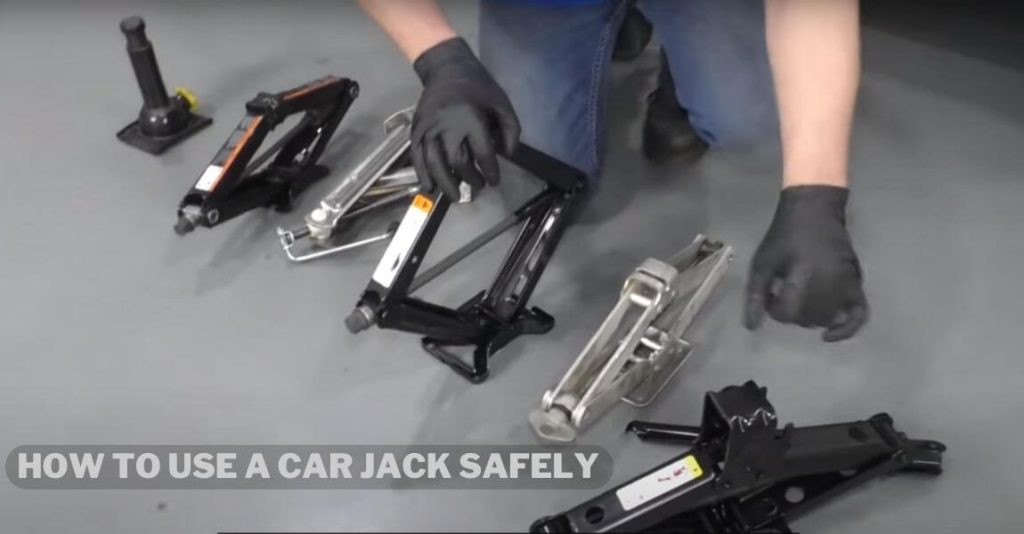
Contents
Tip 1: Choose The Right Type Of Car Jack
Hydraulic Jack For Larger Vehicles
- This type of car jack is designed to lift heavier vehicles such as trucks and SUVs.
- It works using hydraulic pressure to raise the vehicle off the ground.
- Hydraulic jacks are sturdier and provide more stability compared to other types of jacks.
- They are often used in professional automotive shops.
- Ensure that the hydraulic jack you choose has a weight capacity that matches your vehicle’s weight.
- It is important to use hydraulic jacks on a flat and solid surface for maximum safety.
- Always position the jack in the correct lifting points indicated in your vehicle’s manual.
Scissor Jack For Smaller Vehicles
- Scissor jacks are commonly found in smaller cars and sedans.
- They operate using a mechanical screw mechanism that lifts the vehicle vertically.
- These jacks are lightweight, portable, and easy to use.
- They usually come with the vehicle as part of the spare tire kit.
- Scissor jacks have a lower weight capacity compared to hydraulic jacks.
- Place the scissor jack on solid and level ground before attempting to lift the vehicle.
- Always consult your vehicle’s manual to locate the recommended lifting points.
Bottle Jack For Heavy-Duty Lifting
- Bottle jacks are ideal for lifting extremely heavy vehicles or loads.
- They work by applying hydraulic pressure through a vertical piston.
- These jacks are compact and have a high weight capacity.
- Bottle jacks are commonly used in industrial settings and for heavy-duty lifting.
- Ensure that the bottle jack you choose is compatible with the weight of your vehicle or load.
- Position the jack on a stable surface and use jack stands for additional support.
- Always follow the manufacturer’s instructions for correct usage and safety precautions.
Remember to choose the appropriate type of car jack based on the weight and size of your vehicle. Safety should always be your top priority when using car jacks.
Tip 2: Find A Stable Surface For Jack Placement
When it comes to using a car jack safely, finding a stable surface for jack placement is crucial. To prevent accidents and ensure the stability of your vehicle, follow these guidelines:
- Level, flat, and solid ground: Always place the car jack on a level, flat, and solid surface. This provides maximum stability and minimizes the risk of the jack tipping over.
- Avoid gravel, dirt, or uneven surfaces: Uneven surfaces like gravel or dirt can compromise the stability of the jack, making it unsafe to use. Look for a smooth and solid area in your surroundings.
- Use a sturdy wooden board underneath if necessary: In some cases, it may be challenging to find a perfect surface for the jack. If you’re dealing with a surface that is less stable or uneven, consider placing a sturdy wooden board underneath the jack. This will provide extra support and stability, ensuring the jack functions properly.
Remember, safety should always be your top priority when using a car jack. By finding a stable surface for jack placement, you can significantly reduce the risk of accidents and work on your vehicle with confidence.
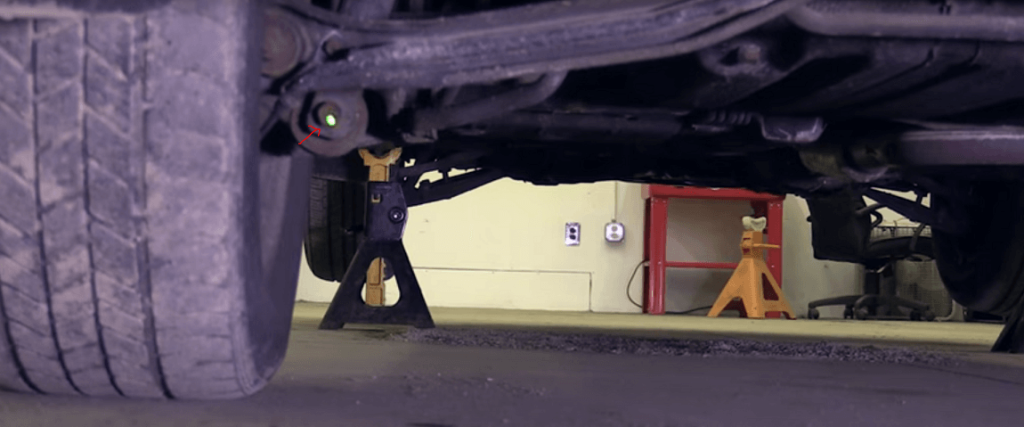
Tip 3: Locate The Proper Jacking Point On Your Vehicle
To safely use a car jack, it is crucial to know where to position it on your vehicle. This ensures a stable and secure lift without causing damage. Follow these guidelines to locate the proper jacking point:
- Refer to the car’s manual or manufacturer’s guidelines: Start by consulting your car’s manual or the manufacturer’s guidelines. These resources provide specific instructions on where to position the jack for your particular make and model.
- Look for reinforced areas or designated jack points: Inspect your vehicle’s underside to identify reinforced areas or designated jack points. These points are usually reinforced to handle the weight of the vehicle when lifted. Look for marked locations on the frame or undercarriage.
- Avoid jacking on plastic or undercarriage components: It is important to avoid jacking directly on plastic parts or other vulnerable undercarriage components. Lifting in these areas can cause damage to your vehicle. Instead, aim to position the jack on sturdy metal parts, such as the frame or suspension components.
Remember, proper placement of the jack ensures your safety and reduces the risk of vehicle damage. By referring to your car’s manual or manufacturer’s guidelines, looking for reinforced areas or designated jack points, and avoiding plastic or undercarriage components, you can confidently locate the proper jacking point on your vehicle.
Tip 4: Prepare The Vehicle Before Lifting
Set The Parking Brake And Engage The Gear Or Place In Park
Before lifting your vehicle with a car jack, it is crucial to prepare the vehicle properly to ensure maximum safety. By following these steps, you can prevent any accidental movement of the vehicle while it is being lifted. Here’s how you can set the parking brake and engage the gear or place it in the park:
- Pull the handbrake lever firmly or press the foot brake pedal down completely.
- Make sure the vehicle is in either the first gear (for manual transmission) or park (for automatic transmission).
- This will help prevent the vehicle from rolling or moving during the lifting process.
- Engaging the parking brake adds an extra layer of security and stability, reducing the risk of accidents.
Place Wheel Chocks In Front And Behind The Opposite Wheels
To further enhance the stability of your vehicle while using a car jack, it is essential to use wheelchocks. Wheel chocks act as blocking mechanisms to prevent the wheels from rolling or shifting. Follow these steps to properly place wheel chocks:
- Select appropriate wheel chocks that are suitable for the weight and size of your vehicle.
- Position the wheel chocks in front of the opposite wheels that are not being lifted.
- Make sure to place them snugly against the tire tread to prevent any movement.
- Also, place wheel chocks behind the opposite wheels to provide extra security.
- Wheel chocks are especially important when lifting on an incline or uneven surface.
Remove Any Loose Items From The Car That Could Shift During Lifting
Before raising your vehicle with a car jack, it is crucial to remove any loose items inside the car that could potentially shift or fall. This step ensures the safety of both the vehicle and the individuals involved. Follow these guidelines when removing loose items:
- Clear out any personal belongings, such as bags, tools, or loose items from the interior.
- Pay special attention to items that could move or roll, causing imbalance.
- Consider removing loose floor mats or securing them properly to prevent interference.
- Removing loose items helps maintain balance and stability during the lifting process.
- It also reduces the risk of damage to the items or any potential hazards.
By following these tips and properly preparing your vehicle before using a car jack, you can ensure a safe and efficient lifting process. Remember to set the parking brake, engage the gear or place it in park, use wheel chocks, and remove any loose items before starting.
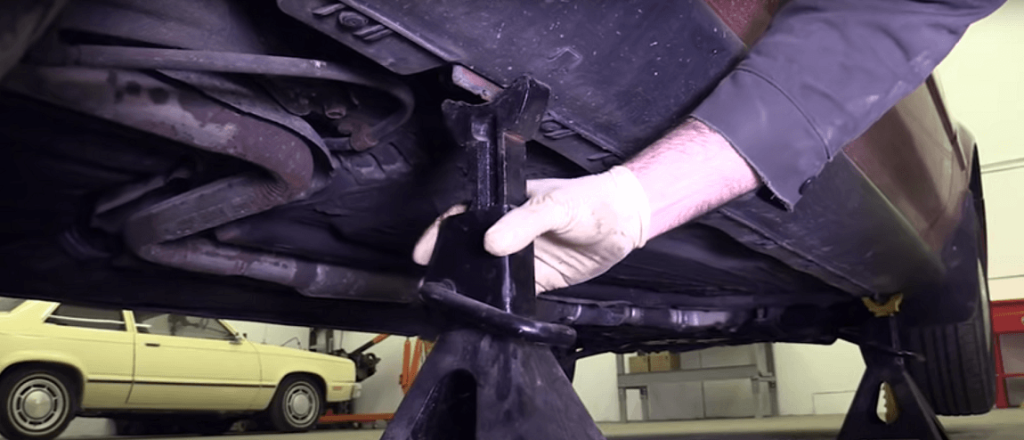
Tip 5: Properly Position The Jack And Begin Lifting
Positioning the car jack correctly is crucial for safely lifting your vehicle. Follow these steps to ensure a smooth and secure lifting process:
- Align the jack saddle with the jack point on the vehicle: Locate the designated jack points mentioned in your vehicle’s owner manual and align the saddle of the jack with the jack point. This will provide stability and prevent any damage to the vehicle’s body or frame.
- Slowly pump the jack handle or use an electric jack: If you have a manual jack, start pumping the jack handle gradually and evenly to raise the vehicle. Ensure that the movements are controlled and avoid applying excessive force. Alternatively, if you have an electric jack, operate it according to the manufacturer’s instructions.
- Lift the vehicle just enough for the tires to clear the ground: As you continue pumping the jack handle or operating the electric jack, lift the vehicle until the tires are slightly above the ground. It’s essential to lift the vehicle evenly, ensuring all tires clear the ground simultaneously. This will prevent any imbalance and maintain stability during the process.
Remember, safety is paramount when using a car jack. Always double-check the alignment, follow the appropriate lifting technique, and proceed cautiously.
Tip 6: Securely Support The Vehicle
When it comes to using a car jack safely, one crucial step is to securely support the vehicle using jack stands. This ensures stability and prevents any accidents or injuries. Here are the steps to properly support the vehicle:
- Place jack stands under the appropriate support points: Before lowering the vehicle onto the stands, it’s important to identify the correct support points. These points are mentioned in the vehicle’s manual and are typically reinforced areas specifically designed to bear the car’s weight. Carefully position the jack stands under these points.
- Lower the vehicle onto the jack stands carefully: Once the jack stands are in the correct position, slowly and steadily lower the vehicle until it rests securely on the stands. Avoid any sudden movements or jerks that could disrupt the stability of the car.
- Wiggle the vehicle slightly to ensure stability: After the vehicle is resting on the jack stands, it’s essential to check for stability. Gently wiggle the car to ensure that it is firmly supported and there is no wobbling or shifting.
Remember, safety should always be the top priority when using a car jack. By properly supporting the vehicle with jack stands, you can ensure a secure and stable environment to perform maintenance or repairs.
In Summary
To securely support your vehicle using a car jack, follow these steps:
- Place jack stands under the appropriate support points.
- Lower the vehicle onto the jack stands carefully.
- Wiggle the vehicle slightly to ensure stability.
By adhering to these steps, you can safely work underneath your vehicle without any worries. Stay cautious and prioritize your safety throughout the entire process.
Tip 7: Perform The Necessary Repairs Or Maintenance
Follow Proper Safety Precautions While Working Under The Vehicle:
- Always engage the parking brake and chock the wheels before getting underneath the car.
- Use jack stands to support the vehicle securely while you work.
- Avoid wearing loose clothing or jewelry that could get caught in moving parts.
- Keep long hair tied back and tucked away.
- Use a flashlight to ensure proper visibility in dimly lit areas.
- Never rush or take unnecessary risks when working underneath a vehicle.
Use Appropriate Tools And Techniques:
- Use a quality car jack that is rated to support the weight of your vehicle.
- Position the jack correctly on a solid and level surface, such as a frame or designated lifting point.
- Double-check the stability of the jack before getting under the vehicle.
- Use a torque wrench to tighten lug nuts and other fasteners to the manufacturer’s recommended specifications.
- Lubricate the jack mechanism and other moving parts regularly to ensure smooth operation.
- Familiarize yourself with the owner’s manual or repair guide for specific instructions and precautions.
Seek Professional Assistance If Unsure:
- If you are uncertain about any repair or maintenance procedures, it’s best to seek assistance from a qualified mechanic.
- Don’t hesitate to ask for help or advice from knowledgeable friends or professionals.
- Some repairs, such as complex engine or transmission work, require specialized tools and expertise.
- Professional assistance ensures that the job is done correctly and helps prevent potential accidents or further damage.
- Remember, your safety should always be a top priority when working on a vehicle.
Remember, working with a car jack can be dangerous if proper precautions are not taken. By following safety protocols, using the right tools, and seeking professional assistance when needed, you can ensure a safer and more successful experience with car repair and maintenance.
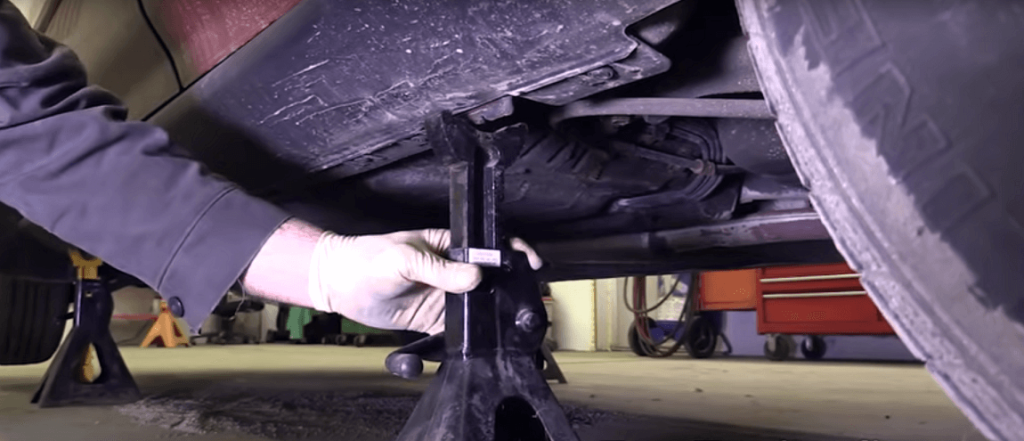
Stay Safe And Happy Wrenching!
Tip 8: Lower The Vehicle Safely
When it’s time to lower your vehicle after completing your maintenance task, it’s crucial to do so in a safe and controlled manner. Follow these steps to ensure a smooth and secure descent:
Remove The Jack Stands One At A Time:
- Begin by identifying the jack stand positioned closest to you.
- Carefully loosen the release mechanism, enabling the stand to come down slowly.
- Repeat the process for each remaining jack stand, removing them one at a time.
Slowly Lower The Vehicle Using The Jack Handle Or Electric Jack:
- If you’re using a manual jack, turn the handle in a clockwise direction to lower the vehicle gently.
- For an electric jack, use the appropriate controls to initiate a gradual descent.
Double-Check That The Vehicle Is Completely Stable Before Removing The Jack:
- Inspect the vehicle to ensure that it’s resting steadily on the ground.
- Verify that the weight is evenly distributed on all wheels.
- Give the vehicle a gentle push to confirm it remains stable.
Remember, the safety of both yourself and your vehicle is of utmost importance during the process of lowering the car. Following these steps will help you maintain a secure environment and prevent any potential accidents.
Tip 9: Store The Jack Properly
When it comes to using a car jack safely, proper storage is often overlooked. However, storing your jack correctly is essential to maintain its performance and longevity. Follow these guidelines to store your car jack properly:
Clean And Inspect The Jack For Any Damage Or Issues:
- Before storing the car jack, make sure to clean it thoroughly. Remove any dirt, debris, or oil residues that may have accumulated during use.
- Inspect the jack for any signs of damage, such as cracks, bent parts, or worn-out components. If you notice any issues, address them before storing the jack.
Store The Jack In A Secure And Dry Location:
- Find a secure and dry location to store your car jack. This will help prevent moisture or water damage, which can lead to rusting or deterioration.
- Consider using a garage or a designated storage area to keep the jack protected from extreme weather conditions.
Follow Any Specific Manufacturer Guidelines For Storage:
- Different car jacks may have specific instructions for storage provided by the manufacturer. Always refer to the user manual or any guidelines provided by the manufacturer to ensure you’re storing it correctly.
- Pay attention to any disassembly requirements or recommendations if applicable.
Remember, properly storing your car jack is crucial for its reliability and durability. By cleaning and inspecting the jack, finding a secure storage location, and following any manufacturer instructions, you can ensure that your car jack stays in excellent condition and is ready for use whenever the need arises.
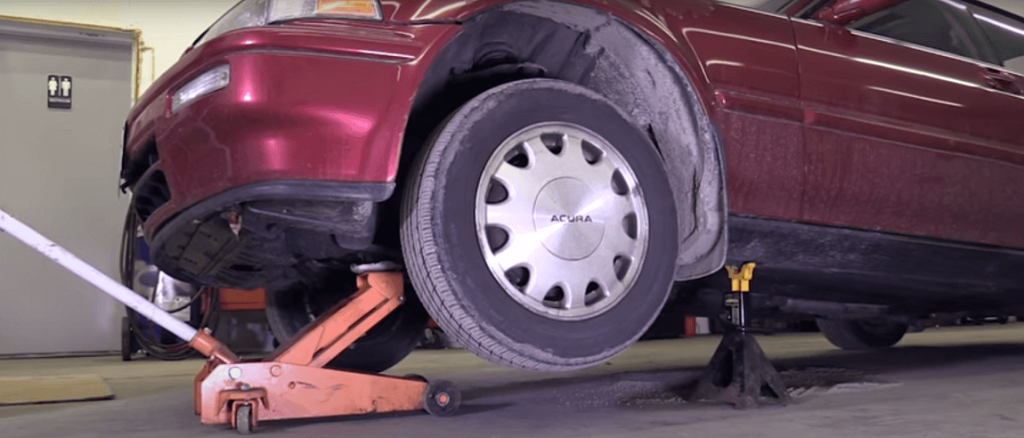
Tip 10: Regularly Maintain And Inspect Your Jack
Regular maintenance and inspection of your car jack is essential to ensure its safe and efficient usage. By following these simple steps, you can keep your jack in top shape and avoid any potential mishaps or accidents.
Check For Leaks, Damage, Or Wear And Tear:
- Inspect your jack for any signs of leaks, such as oil or hydraulic fluid seeping out. If you notice any leaks, it’s important to address them promptly to prevent further damage and ensure proper functioning.
- Examine the jack for any visible damage, such as cracks or dents. Damaged parts can compromise the stability and safety of the jack, so it’s crucial to replace or repair them as needed.
- Pay attention to any signs of wear and tear, such as frayed cables, loose bolts, or worn-out pads. These issues can affect the overall performance of the jack and increase the risk of accidents. Be vigilant and replace worn or damaged parts promptly.
Lubricate Moving Parts As Recommended By The Manufacturer:
- Refer to the manufacturer’s instructions for the recommended lubrication schedule and type of lubricant to be used. Proper lubrication reduces friction, ensures smooth operation, and extends the lifespan of your car jack.
- Apply the lubricant to all moving parts, including the handle, gears, and joints. Be thorough but avoid over-lubricating, as excessive lubrication can attract dust and dirt, leading to potential damage.
Replace Worn Or Damaged Parts As Needed:
- If you identify any worn or damaged parts during your inspection, it is crucial to replace them promptly.
- Consult the manufacturer’s instructions or seek professional assistance for replacing specific parts. Using a jack with worn-out or damaged components can compromise both your safety and that of your vehicle.
Remember, regular maintenance and inspection of your car jack is key to ensuring its safe and effective use. By addressing leaks, damage, wear and tear, lubricating moving parts, and replacing worn or damaged components, you can maintain a reliable and secure jack for all your car lifting needs.
Stay proactive and prioritize the safety of yourself and your vehicle.
Frequently Asked Questions For How To Use A Car Jack Safely
Can I Use A Car Jack On an Uneven Terrain?
Yes, it is possible to use a car jack on uneven terrain, but it is not recommended. Uneven terrain can compromise the stability of the jack, making it unsafe to use. It is best to find a flat and level surface to ensure stability and safety while lifting the car.
How Often Should I Inspect My Car Jack?
It is essential to inspect your car jack regularly, ideally before each use. Look for any signs of damage, such as cracks or bends in the frame, loose or missing parts, or leaking hydraulic fluid. Regular inspections help ensure the jack is in good working condition and safe to use.
Is It Safe To Work Under A Car Supported By A Jack?
No, it is not safe to work under a car supported only by a jack. Always use additional safety measures like jack stands to support the vehicle securely. Jacks can fail or get knocked over, causing the car to fall unexpectedly.
Using jack stands provides an extra layer of safety and stability.
Conclusion
If you want to ensure a safe and successful experience while using a car jack, it is crucial to follow proper usage guidelines. Always check the weight capacity of your car jack and ensure it is suitable for the vehicle you are lifting.
Position the jack correctly and use safety measures such as wheel chocks to prevent accidents. Regularly inspect your jack for any signs of damage or wear and tear, and never use a faulty jack. Remember to lower the vehicle slowly and steadily to avoid sudden drops.
By taking these precautions and being cautious, you can confidently use a car jack to perform necessary maintenance or repairs on your vehicle. Keep these tips in mind and prioritize your safety to make the most of your car jack.

